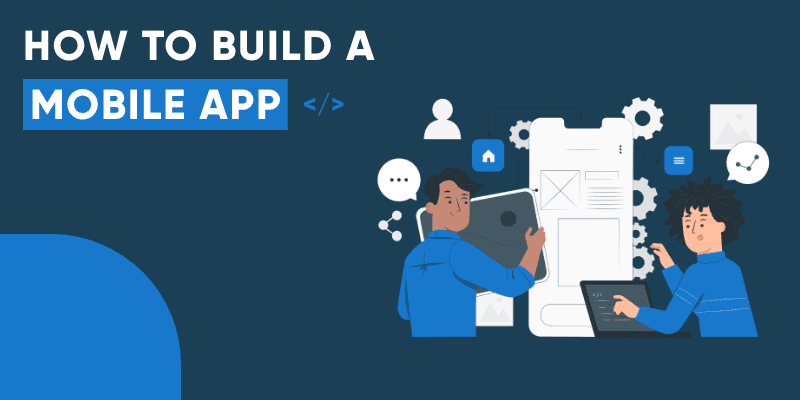Mastering Mobile App Development: A Complete Beginner’s Guide
In today’s digital-first world, mobile app development is a must-have skill for startups, enterprises, and even individuals. Whether you’re interested in js app development, building custom solutions for businesses, or exploring cross platform app development, understanding the mobile app dev process is the first step toward creating powerful, user-friendly applications.
With growing demand, mobile software development has evolved rapidly—thanks to advanced app development frameworks, no-code app builders, and custom mobile app development services. But before diving into tools and platforms, it’s essential to master the fundamentals.
The 5 Essential Stages of Mobile App Development
1. Generate an App Idea
The best apps solve real-world problems. Whether you’re thinking about how to create an app, a social media app maker, or how to build an app for your business, start by identifying a challenge people face. Use market trends, feedback, or shows like Shark Tank for inspiration. Define your app’s purpose, and outline what sets it apart—this forms the foundation for successful software and app development.
2. Conduct Market Research
Understanding the competition is key. Investigate existing mobile application development trends and analyze popular platforms like android creator or software creator software. Research helps refine your custom iOS app development idea, define your user persona, and discover the most relevant app development tools and technologies.
By studying other cross platform development approaches and tools, you can find the best mobile dev frameworks to fit your app’s purpose.
3. Design Your App for Usability
Design isn’t just about looks—it’s about creating intuitive, functional experiences. Apply mobile design best practices by focusing on simplicity, accessibility, and responsiveness. Consider how your app flows: from user signup, navigation, to settings adjustment. Tools and templates can help you simulate the design phase without writing any code.
This phase is crucial whether you’re building with js mobile development, custom mobile app development platforms, or website developers creating hybrid apps.
4. Start the Development Phase
Now it’s time to bring your app to life. Choose between traditional coding (like how to make an app with Java) or faster platforms like best no code app builder tools. IDEs and app building courses enable you to create prototypes and test ideas quickly.
From how to create apk files to build your own apk and install, the development process includes choosing the right stack, integrating APIs, and ensuring device compatibility. Whether you’re going with best app dev framework or learning via mobile development courses, hands-on practice is essential.
5. Test Your Application Thoroughly
Testing ensures your app performs across all platforms and devices. Cover aspects like functionality, performance, compatibility, and security. Use tools or mobile app consulting services to ensure bug-free performance. Continuous testing during and after development helps you optimize for success.
Learn App Development the Smart Way
With a variety of learning paths available—from online app development courses, app building courses, to mobile app development tools—anyone can start learning. You’ll find resources that explain how to create a cell phone app, how to get an app created, and even explore js app development tutorials.
Platforms also support cross platform app dev—essential for creating apps that work on both iOS and Android. Whether you’re learning how to make an application or working with advanced mobile app frameworks, the opportunities are endless.
You’ve come to the perfect place if you want to build a mobile app. If you’re seeking information on all aspects of app development, from concept to long-term user retention, you’ve come to the right place. In this guide, we’ll walk you through creating a well-thought-out, well-designed, and well-built mobile app that your future users will appreciate.
Here’s what we will learn:
- Why are Mobile Apps necessary for your Business?
- Cost of building a mobile app
- Mobile Platforms
- How to Build a Mobile App
If you’re ready to make your mobile app fantasy a reality, read this guide till the end.
Let’s get started with the introduction…
What Is Mobile App Development?
You’re mistaken if you assume mobile applications are exclusive for huge brands like Walmart and Bank of America. More small and mid-size businesses are adopting the mobile trend, realizing that a successful mobile strategy requires more than simply a mobile-friendly website and that their company requires a mobile app. If you’re still not convinced you should create your mobile app, consider the benefits of doing so sooner rather than later.
Importance of Mobile Apps For Your Business
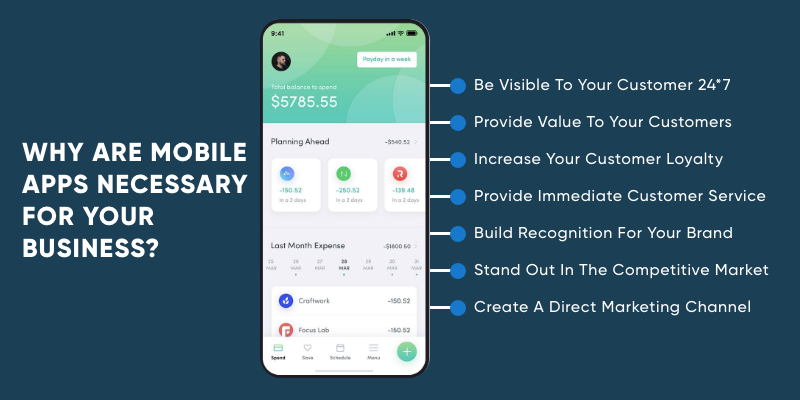
You’re mistaken if you think mobile applications are only for big names like Walmart or Bank of America. Today, even small and mid-size businesses are embracing the mobile revolution by investing in mobile app development to stay competitive. A mobile strategy that includes just a responsive website is no longer enough. Whether you want to build your own APK and install, learn how to make an app with Java, or explore js app development, having a mobile app is crucial for growth.
Thanks to platforms like best no code app builder, software creator software, and custom iOS app development, building an app has become faster and more accessible. Business owners can now create a cell phone app, hire website developers, or enroll in mobile development courses and app development courses to gain the right skills. You can start with how to create an APK, master app dev process, and gradually scale up to cross platform app development using tools such as mobile app frameworks or mobile software development platforms.
From choosing the best app programming software to using mobile app development tools, the options are vast. Whether you’re seeking custom mobile app development, js mobile development, or wondering how to get an app created, there’s a solution for every goal. You can even become a social media app maker, explore how to create an app, or utilize best app dev framework for high-performance applications.
If you’re thinking about how to make an application or how to build an app for my business, now is the perfect time to start. Take advantage of mobile app consulting services, explore mobile dev frameworks, or even dive into cross platform development to reach a broader audience. The rise of software and app development, android creator platforms, and app building courses proves that app creation is no longer a luxury—it’s a necessity.
Be visible to your customer 24*7
According to statistics, the average American adult spends approximately 3 hours and 43 minutes per day on their smartphone. While it’s likely that only a few apps account for most of this total usage, it doesn’t change the fact that each user must unlock, scroll, and scan their device to find the apps they’re looking for.
Provide value to your customers
Over the past decade, the business landscape has undergone a major transformation, largely driven by digital innovation. Today, companies rely heavily on mobile application development to simplify customer transactions and enhance the user experience. Whether you’re exploring js app development, trying to create a cell phone app, or planning to build your own APK and install, the role of mobile apps in business success is undeniable.
Consumers now expect convenience, speed, and personalization—exactly what mobile apps are designed to offer. From how to make an app with Java to mastering mobile design best practices, businesses are investing in intuitive and functional apps that meet rising expectations. Industries like retail benefit immensely, as mobile apps make products and services easily accessible. By embracing software and app development, companies are streamlining operations while increasing engagement.
Whether you’re a beginner wanting to learn app development through an app development course or a business owner hiring custom mobile app development services, there’s a solution for every need. With tools like best no code app builder, android creator, and software creator software, building apps is faster than ever. Even non-technical users can get started with mobile development courses or follow simple guides on how to create an app.
To stay competitive, companies are adopting mobile app development tools, best app programming software, and robust mobile app frameworks. They’re leveraging mobile dev frameworks and cross platform app development strategies to ensure seamless performance across devices. From app building courses to consulting with mobile app consulting services, the resources available today support every stage of the app dev process.
Whether you’re aiming to become a social media app maker, researching how to get an app created, or need help from website developers or custom iOS app development firms, mobile solutions are more accessible than ever. Now is the time to explore js mobile development, invest in cross platform development, and discover how to build an app for my business that truly delivers.
Increase your customer loyalty
Almost every successful business has a high customer retention rate. Maintaining a high retention rate is generally possible by providing exceptional value to your customers and ensuring they are constantly satisfied. On the other hand, loyalty programs offer an excellent opportunity to move things forward.
Whereas having a loyalty program is a fantastic idea, many company owners miss the target and create a program that is difficult to join. Mobile loyalty programs might keep you from getting this typical blunder. Here are a few simple methods to include loyalty programs in your mobile application experience:
- Make quick rewards available to app users. A point (cashback) system can reward customers with a portion of their purchase, among many other things. They can then use the points for additional purchases.
- Provide customized product recommendations promptly. This will necessitate a thorough review of user sessions. You can then make relevant product recommendations to entice them to return.
- Encourage your audience to share your content on social media. Use social media icons to encourage app users to share their shopping experiences and raise awareness.
Customers loyal to you are not only a source of direct revenue but may also be used as marketing channels. They contribute to increasing sales.
Provide immediate customer service
As previously said, instant communication with your consumer is essential for a positive customer experience. According to studies in the customer service business, most customers now seek help via smartphones.
Both the business owner and the user gain immensely from mobile customer service:
- Customers have the option of self-serving. Including an innovative, user-friendly help centre in your application could be an intelligent way to help your users find answers to their questions as rapidly as possible.
- Customers ask customer service representatives fewer inquiries. With rising customer service standards, a mobile app might help your employees feel less stressed.
- You can enhance your overall customer experience. Most of the time, the most superb method to provide excellent customer service is to guarantee that there are few or no issues. Data from your application can help you identify potential problems or inquiries for your customers before they arise.
Regardless of how you look at it, a well-implemented mobile app is always good news for customer service.
Build recognition for your brand
A mobile app for your business might help you raise brand awareness significantly. The following two aspects will make your app a winner:
- A mobile app is similar to a blank billboard sign. You can make it fashionable, hip, functional, bold, or informative in any way you desire. But you actually want to develop a mobile app with features that your users will enjoy, as well as one that is well-branded and attractively designed.
- Recognition- Customers will be more likely to acquire your product and service if you can get them engaged with your application regularly. This is known as the “effective frequency” in advertising: as a rule of thumb, hearing and seeing your brand around 20 times can get you recognized.
Regardless of how you look at it, a well-implemented mobile app is always good news for customer service.
Stand out in the competitive market
Mobile applications for small businesses are still uncommon these days, and this is where you can get a competitive edge over your competitors. Be the first in your neighbourhood to provide users with a mobile app. You can impress your users with your forward-thinking approach.
Create a direct marketing channel
Apps can offer various services, such as basic information, prices, bookings, search tools, user accounts, messengers, news feeds, and more. One of the primary benefits of having a mobile app is that it puts all the information you would like to give your customers, including special offers and promotions.
You can quickly remind clients about your products and services when it makes sense with push notifications, which brings you even closer to a direct engagement.
Looking for a competent Mobile App Development Company for developing your mobile app? Reach out to us!
Cost of developing a mobile app
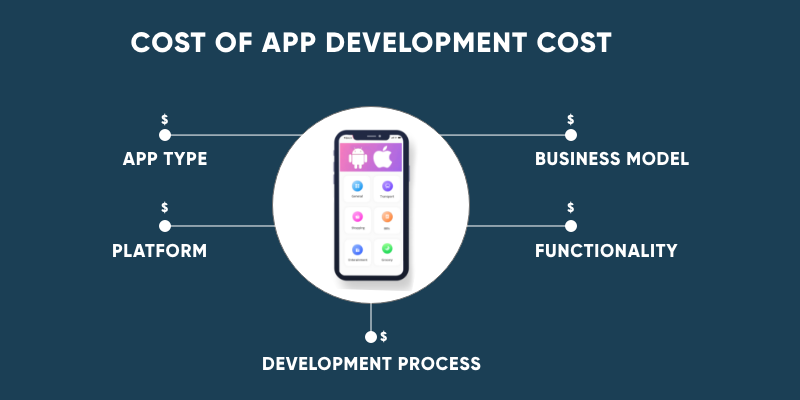
The overall cost of building a mobile application depends on several aspects, such as business model, app types, platform, functionality, and development. The overall cost may vary depending on the mobile app development company you hire and their delivery of mobile app development services.
Clutch conducted a poll on the hours necessary for mobile app development activities and found that the average price to develop a mobile app is $171,450, with a wide range of costs ranging from under $30K to over $700K. It is essential to evaluate the cost of developing an app because it directly impacts the total business.
Choosing A Desired Platform For Your Business
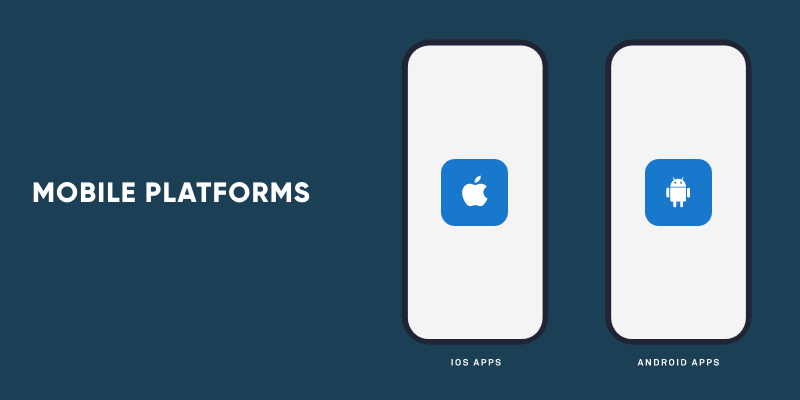
A crucial stage in the development process is determining your business’s ideal mobile app development platform. It’s a critical decision to make because it will directly impact your strategy and business objectives. It will also define the tools you need to develop a mobile app that can stand out in the competition.
Whether you use Android or iOS for your mobile development, each has advantages and disadvantages. As a result, you must read this before deciding on the finest mobile app development platforms for your business.
Android
According to lathe test research from Statista.com, Android is one of the world’s most significant mobile development platforms. Because a substantial number of people use Android phones. You gain access to a larger pool of potential customers by developing an Android app. Like iOS, this operating system is incredibly versatile, as one application can operate on a wide range of devices, including smartphones, tablets, watches, TV boxes, and even automobiles. Google Play also has a large number of apps from which to choose. There is something to suit everyone’s preferences. As a result, if you apply to this marketplace, you can count on many early users.
iOS
The closed iOS operating system requires accuracy and flexibility while developing. Being an iOS app development business, we know the particular difficulties and possibilities this platform offers. Apple’s strict policies guarantee a flawless customer experience, but strict adherence to their requirements is necessary. Our knowledgeable staff flourishes in this fast-paced setting, producing outstanding iOS apps that satisfy Apple’s rigorous requirements.
Working collaboratively with designers, we develop aesthetically pleasing and well-functioning applications. We can keep ahead of the curve by predicting changes in Apple’s ecosystem and making necessary adjustments, thanks to our in-depth knowledge of iOS programming. Operating system upgrades regularly require ongoing app optimization. We put much effort into collaborating with our clients to ensure their apps run well and remain compatible.
How To Build A Mobile App In 2024: Step-by-Step Guide
Set goals
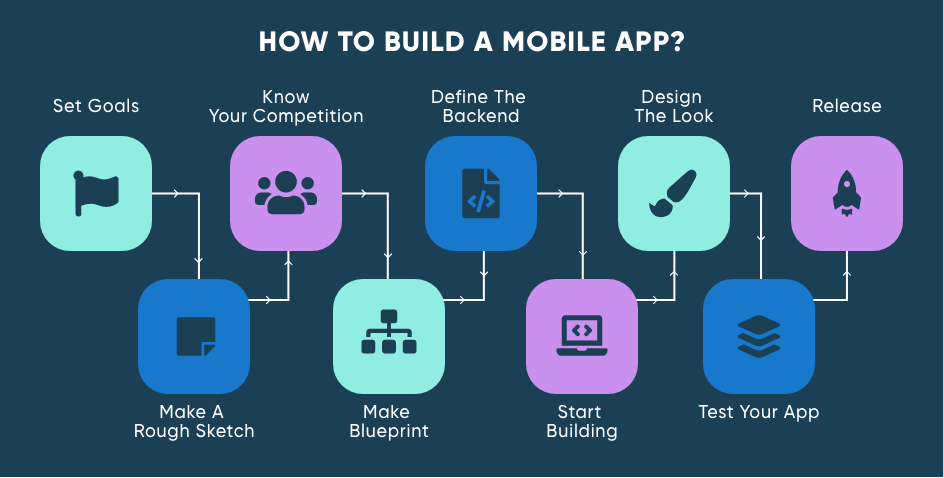
Remove yourself from all forms of technology and sit down with a pen and paper to write down what you want to achieve. In the world of mobile app development, pen and paper, rather than complicated coding and design, is the beginning point. The following questions should be asked and answered:
- What do you want your application to accomplish?
- How will you make it appealing to users?
- What problem will it address?
- How will it make people’s lives easier?
- What strategy will you use to promote your app?
If you don’t have well-defined, clearly-defined goals, you won’t be able to survive in any business! You and anybody you hire to work for you will be frustrated if you lack vision. Make a clear vision of what you want to achieve before you do anything!
Make a rough sketch
No! You still can’t get your PC to switch on. Now, you must develop a sketch of what your application will look like using pen and paper, which contains the answers to the questions regarding its purpose. You’ll use this tool to turn your well-written ideas into graphic representations of your thinking.
Decide whether you want to give your app away for free and monetize it with advertisements or if you wish to charge for it. You can also decide whether or not to allow in-app purchases. If you’re going to do that, make sure you sketch down your thoughts as well.
Research about the app and your competition
Before diving into the development phase, even the most enthusiastic developers must pause. Whether you’re planning js app development, learning how to make an app with Java, or exploring mobile application development, your first step should always be market research. It’s a common misconception to think your app idea is completely unique. Chances are, someone has already tried it. This is where smart planning comes in.
Instead of getting discouraged, use this opportunity to study your competition. Analyze their product, gather user feedback, and identify gaps. This data-driven approach will refine your concept. Whether you’re focused on how to create a cell phone app, build your own APK and install, or how to create an APK, competitor analysis ensures you develop something better.
Your next step should involve technical and legal feasibility checks. For instance, if you’re aiming to become a social media app maker or plan to use best no code app builder tools like android creator or software creator software, you must understand copyright and compliance issues. This is particularly critical in custom mobile app development or custom iOS app development, where infringement could lead to costly setbacks.
As you work through the app dev process, revisit your original plan. Leverage frameworks like best app dev framework and mobile dev frameworks to adapt and optimize your idea. Whether you’re enrolled in mobile development courses, a learn app development program, or an app building course, refining your strategy ensures long-term success.
Also consider the mobile design best practices and the right mobile app development tools that support your project. Selecting the best application development software and working with experienced website developers or mobile app consulting services can help resolve early roadblocks.
Validating your concept early reduces wasted time and costs. From js mobile development to cross platform app development, every stage should be built on solid research. This groundwork gives you the confidence to move forward—whether you’re exploring software and app development, mobile software development, or figuring out how to build an app for my business. Make sure your app stands out and delivers real value.
Make blueprint
A well-thought-out mobile app strategy enables you to visualize and design your app before it is developed fully. You want to be in the best position to succeed and make well-informed decisions. You want to ensure your staff is prepared so they aren’t wasting time and effort that may be better spent elsewhere in the company. The Mobile App Blueprint lets you plan the entire project, from the users you’ll target to the investors who can help you get it off the ground.
Define the backend for your app
We left off with your blueprint, so you have a blueprint of how you want your application to work at this point in the development process. It’s now time to put that design to work and start testing functionality.
It would help if you defined your servers, APIs, and data diagrams using your wireframe. Many excellent do-it-yourself custom mobile app builders are available to offer you the necessary tools. Some of them will even take care of it for you. If you’re not sure what this technical jargon means, you should probably use a service that offers hosting and data collection for your application.
Regardless of how you select to develop a mobile app, it is critical to generate clear diagrams, as they will act as instructions for everyone involved in the project. If you encounter technical issues, update your wireframe to reflect the new details.
Start building
After you’ve laid the groundwork, you can begin putting the pieces of your application together. Your developer will start by configuring your servers, databases, and APIs. This will be done for you if you choose an excellent do-it-yourself application builder. Remember to consider the feedback you received from your testers. Change the app’s functionality to reflect any modifications you made during the first testing phase.
It’s time to sign up for the stores at this stage. To get your application on the market, you must create an account with Google Play and Apple. Please don’t put off going through the process because it may take a few days.
Design the look
Now is the opportunity to hire designers to construct your user interface or UI. Because people are drawn to how things look and how easy they are to navigate, the user interface is a critical component of your application. You must keep the feedback you receive from the testers in mind throughout the design process and ensure that the design and navigation reflect that feedback. What is the best way to build your mobile app?
If you employ a graphic designer to work on your app, you’ll need high-resolution skins or visually appealing displays based on your wireframe. If you’re using a WYSIWYG editor, you must choose your screen template and layout. Keep that testing feedback in mind while building the look of your application. You’re making things for users, not for yourself!
Test your app and make modifications or adjustments if needed
It is essential to conduct a second round of testing. You’ll have a working app and a user interface to test in this round. At this stage, all of your app’s screens should function properly, and your application should also be visually appealing.
To ensure that your app’s look and feel fulfil your expectations, you should run a battery of tests on it in its finished state. Proto.io and Pixate are excellent platforms for app testing. These applications will let you add clickable links to your app’s navigation. They’ll also assist you in examining your app’s final layers, interactions, and design. You can use the data gathered during this testing round to help you move forward.
You’ve put your prototype through its paces and discovered that it still requires a few tweaks. You need to call the troops back and ask them to do the same now that you’ve seen your app in its functional state.
Request that the mobile app development company that looked at your application during the development phase also look at it throughout the testing phase. Allow yourself to be open to constructive criticism again, and act on it. Finally, request that your developer and designer make any adjustments that you believe might benefit your application.
If everything goes well, Release your app
Congratulations—you’ve reached the final stage of your mobile app development journey! Whether you’re working on js app development, how to create an APK, or exploring mobile design best practices, finishing your project is a huge achievement. Now, it’s time to launch your app and let the world experience it.
Before publishing, ensure your custom mobile app development solves a real problem or adds meaningful convenience. Whether you’re learning how to make an application, how to create an app, or simply aiming to build your own APK and install it, this phase is crucial. If your app is built with js mobile development or how to make an app with Java, the submission process might differ slightly based on the platform.
Publishing on Google Play (Android) is often quicker than iOS. For Android, you can instantly submit your application, start marketing, and even sell it right away. Tools like android creator, software creator software, and best no code app builder make deployment faster for beginners and professionals alike. For iOS, the Apple team will review your application before it’s approved—typically within a week. If you’re involved in custom iOS app development, be sure your app meets all their guidelines.
If you’re targeting early adopters, platforms like PreApps are a great way to attract attention before your official launch. These early users often offer valuable feedback to help you refine features.
At this point, it’s also important to plan your promotion strategy. Whether you’re a social media app maker, a business-focused mobile software development firm, or building a solution through cross platform app development, visibility matters. Use strong mobile app consulting services or collaborate with website developers to support a strategic rollout.
Also, make sure your app meets technical and UX standards using the best app dev framework and follows mobile app development tools best practices. Whether your goal is to educate through an app development course, build for scale with cross platform development, or solve a unique business problem with how to build an app for my business, launching is just the beginning.
Your journey from an idea to a full-fledged application—whether through mobile development courses, a learn app development bootcamp, or independent learning—has prepared you for this. Now go ahead and launch your app confidently!
Explore How Mobile Apps Are Built At Echoinnovate IT
Echoinnovate IT is a well-known mobile app development company. Echoinnovate IT provides end-to-end mobile app development services. We develop outstanding cross-platform apps and robust web applications using the newest technologies like Angular, React, Node.js, and Vue.js, in addition to native iOS and Android apps and UI/ UX design.
Echoinnovate IT is a company providing result-oriented and high-quality IT solutions globally. We operate and instruct to design apps that delight our users. Our business strategists sit down with our clients to know their needs, and we don’t stop until we’ve done everything possible to meet those needs. Furthermore, we develop, evaluate, improve, and test the application until we are confident that it (the app) will produce the best outcomes.
Mobile app development services include everything from business analysis to UI/UX design, mobile app testing and deployment, and online market publication. Echoinnovate IT can handle the entire mobile app development process, no matter how broad or complex your requirements are. Our team of specialists, with years of experience in app solution services, works hard to satisfy all your requirements.
You can extend your business in the market by choosing us as your project partner. Our work centres have a team of 56+ skilled developers who give strategically developed and creatively produced mobile app development services to help you take your business to the next level.
Conclusion
Are you looking to optimize your business operations and increase your profits? A mobile app could be the missing piece of the puzzle. Mobile devices now account for the majority of online traffic. A mobile app for your company puts you in an excellent position to take advantage of this trend.
There are almost no sectors of your business that will not benefit from having a mobile app, from branding to customer service and marketing. So, get started with your mobile app development process now!
FAQs
How long does it take to build a mobile app?
It might take around 2-9 months depending on your requirements, the complexity of an application, features, design, use of third-party services, etc.
How much does it cost to develop a mobile app?
The cost of developing a mobile app may lie somewhere between $10,000-$200,000. The cost may vary depending on various factors such as features, the complexity of an application, developers’ cost, the location of the company, and many more.
How to build a mobile app?
You can build your own mobile application with the following steps:
- Set goals Make a rough sketch
- Research about the app and your competition
- Make blueprint Define the backend for your app
- Start building Design the look
- Test your app and make modification or adjustment if needed
If everything goes well, Release your app
